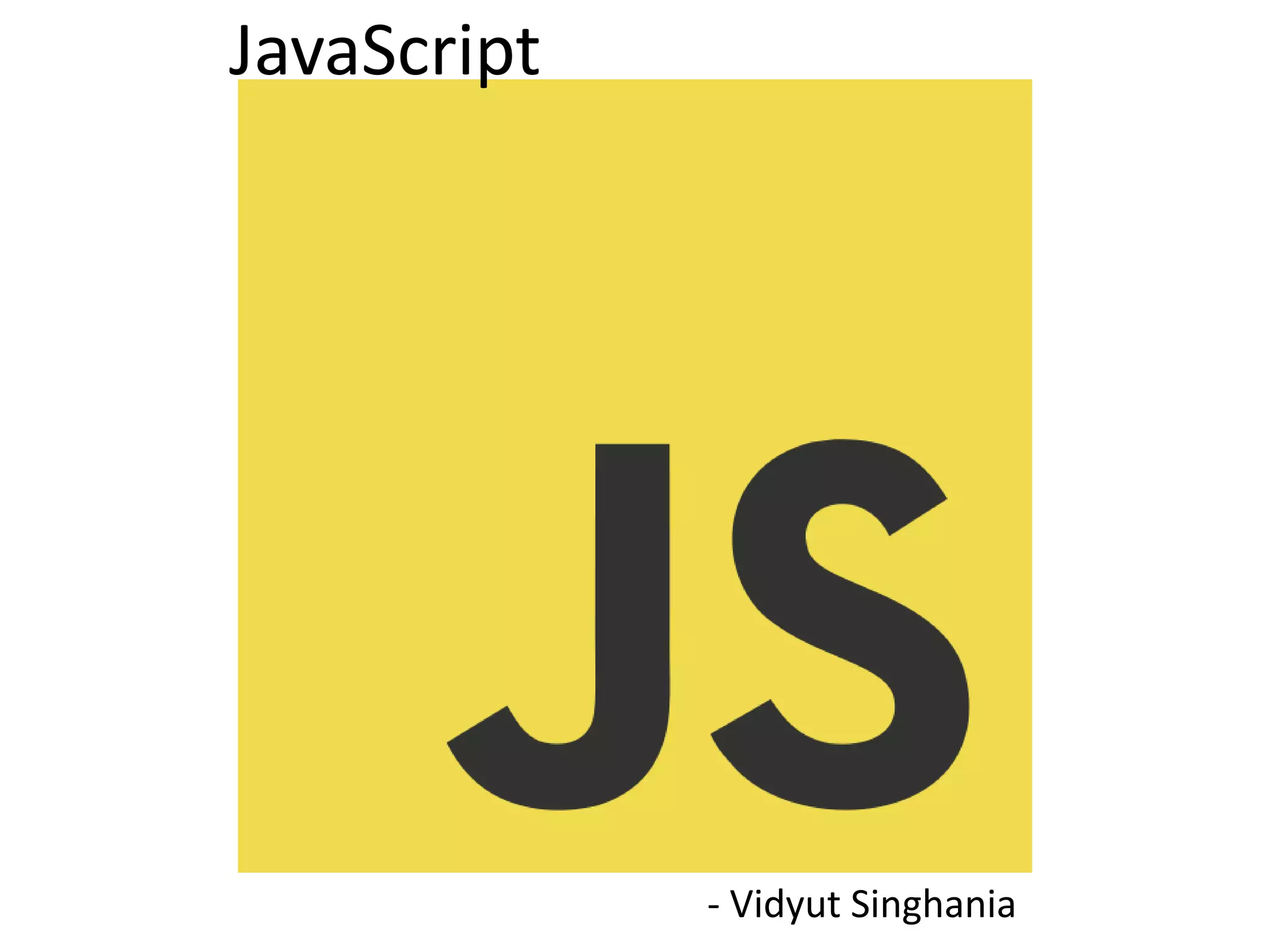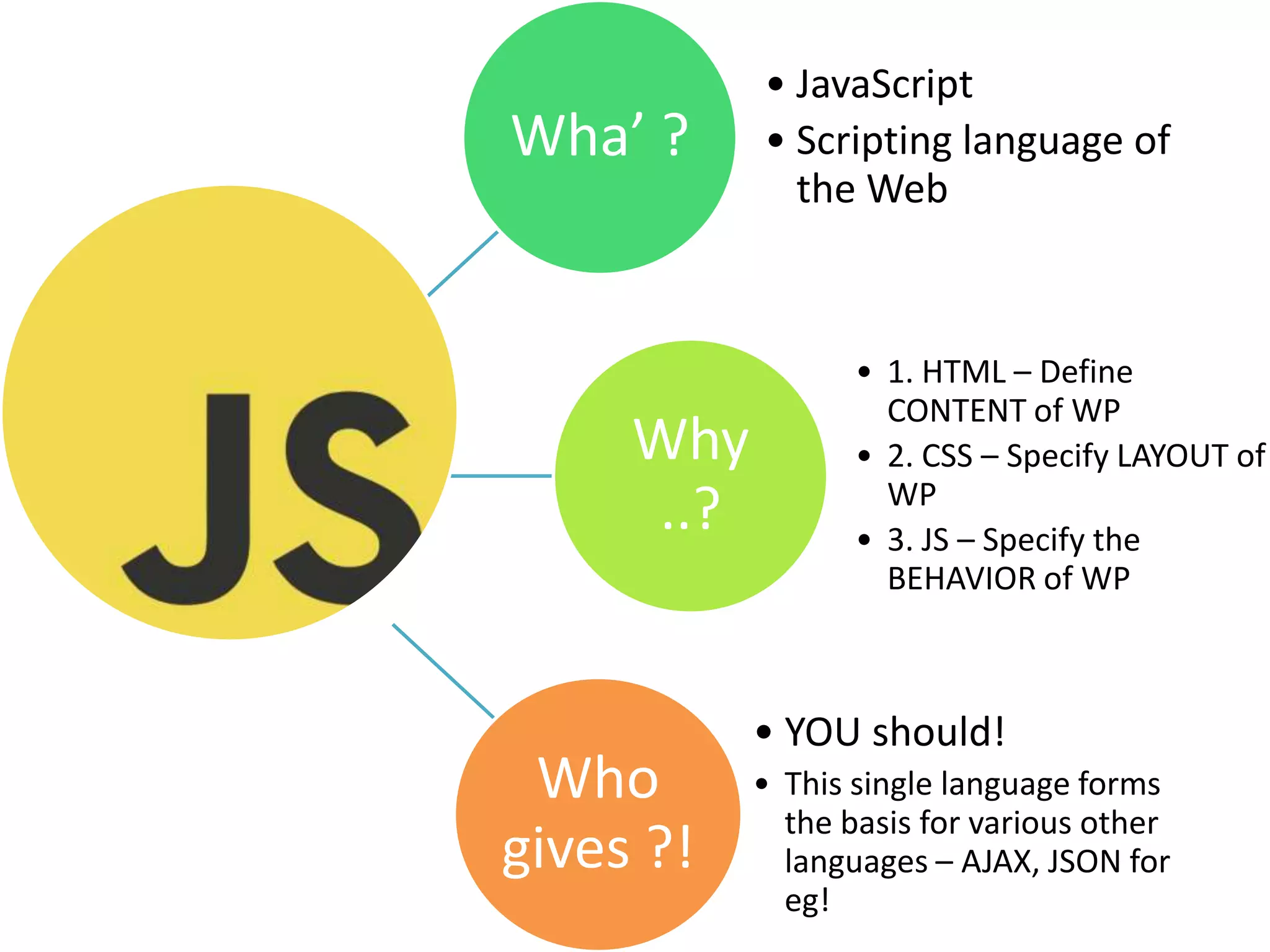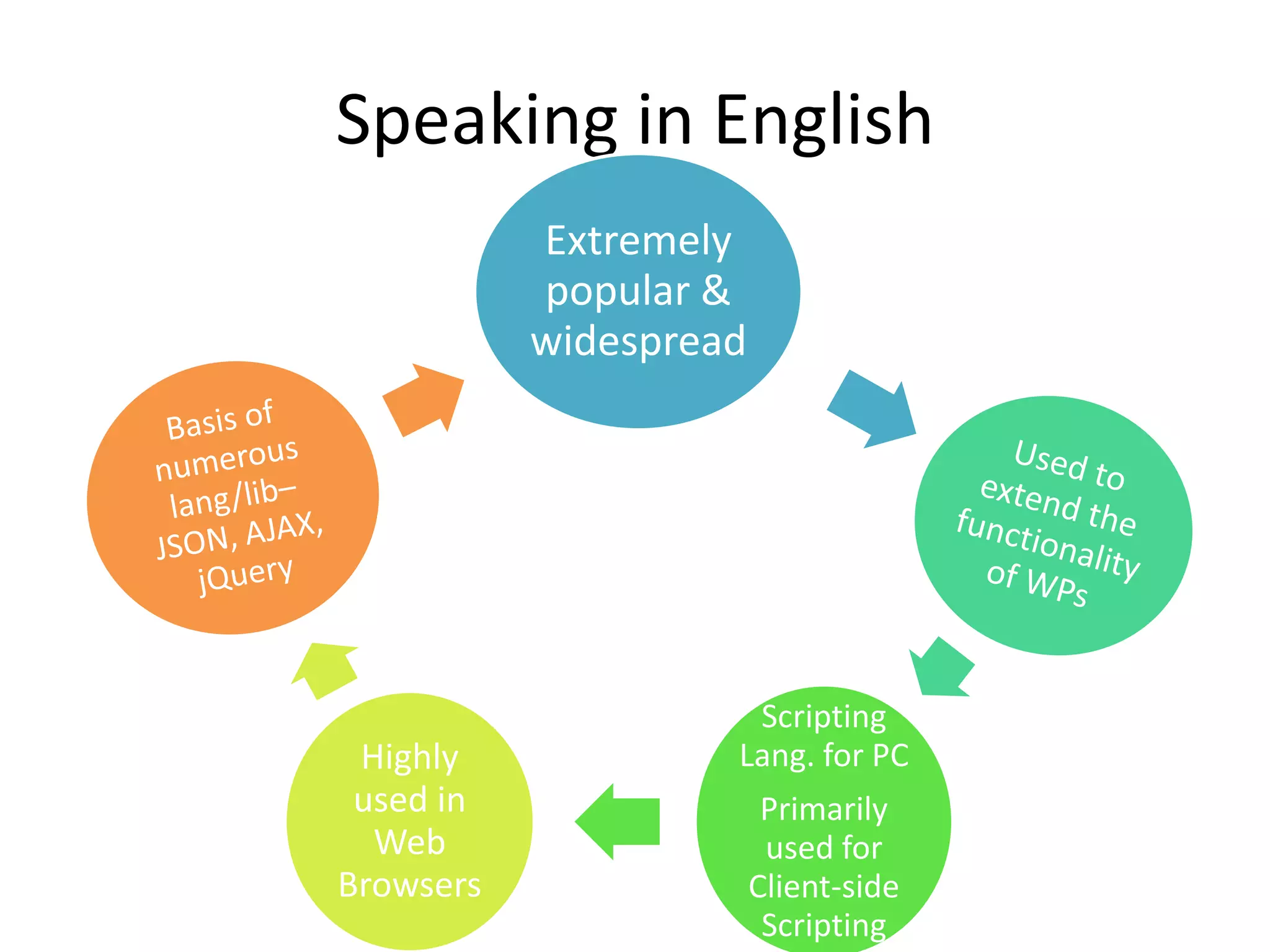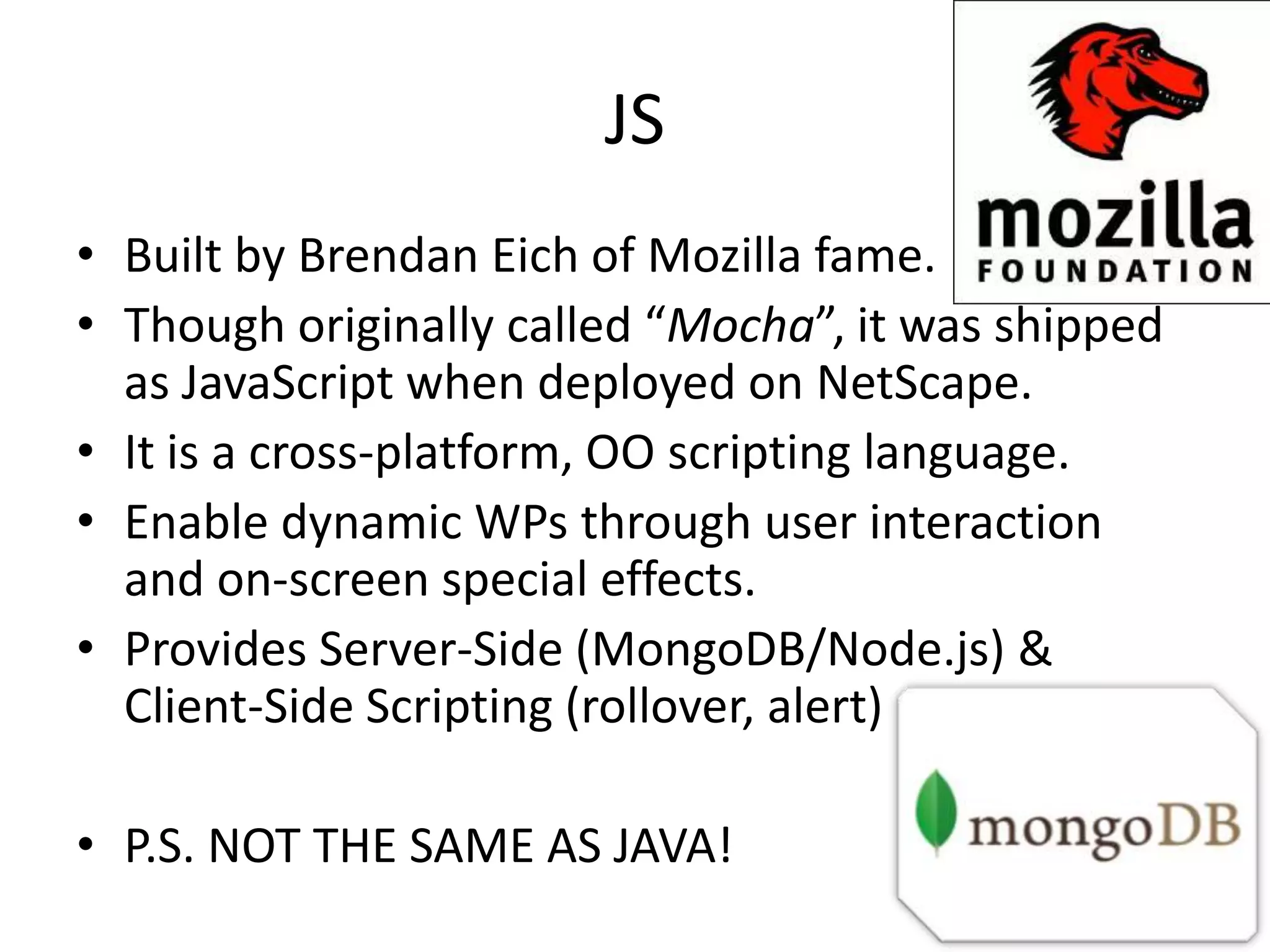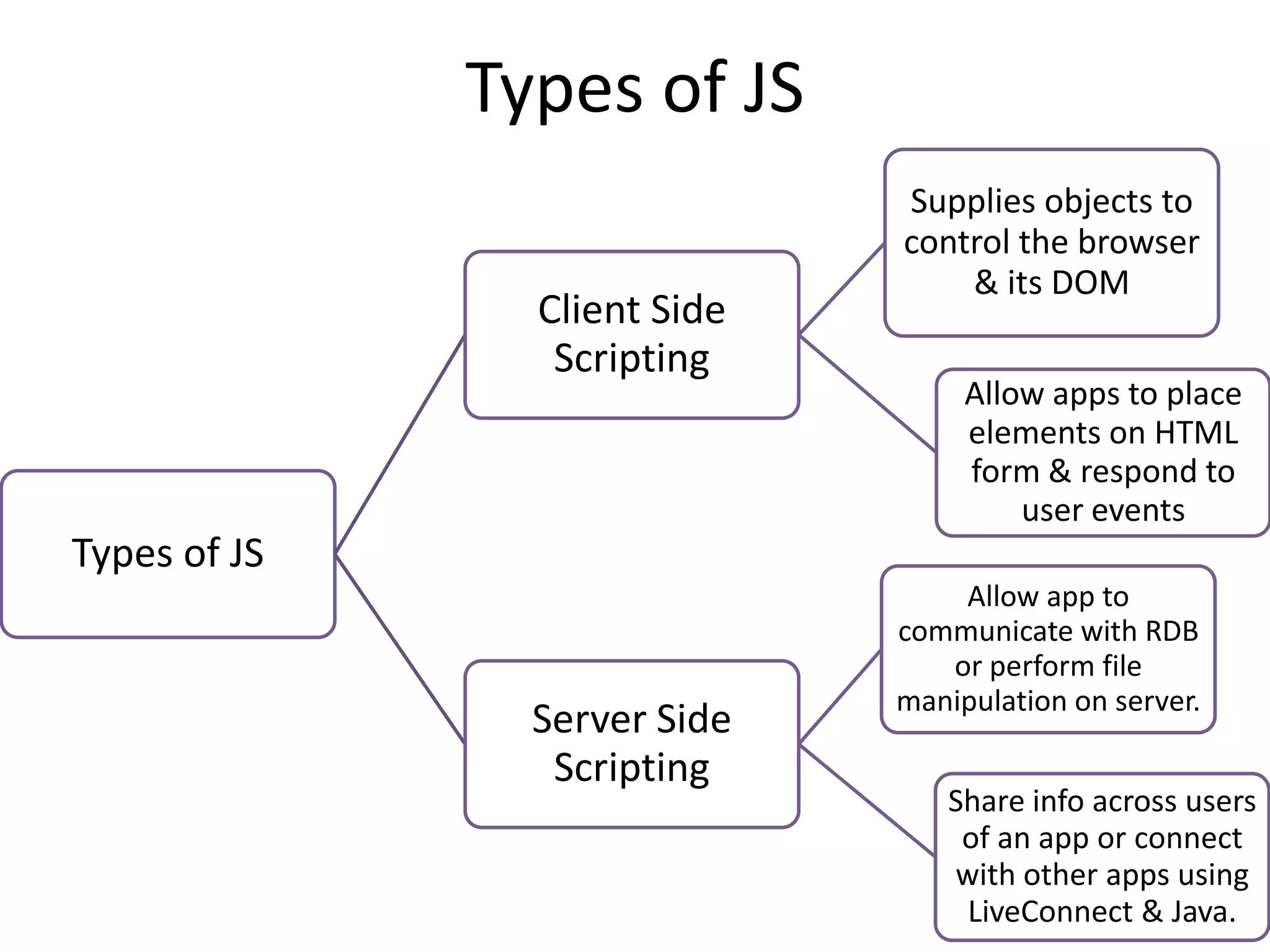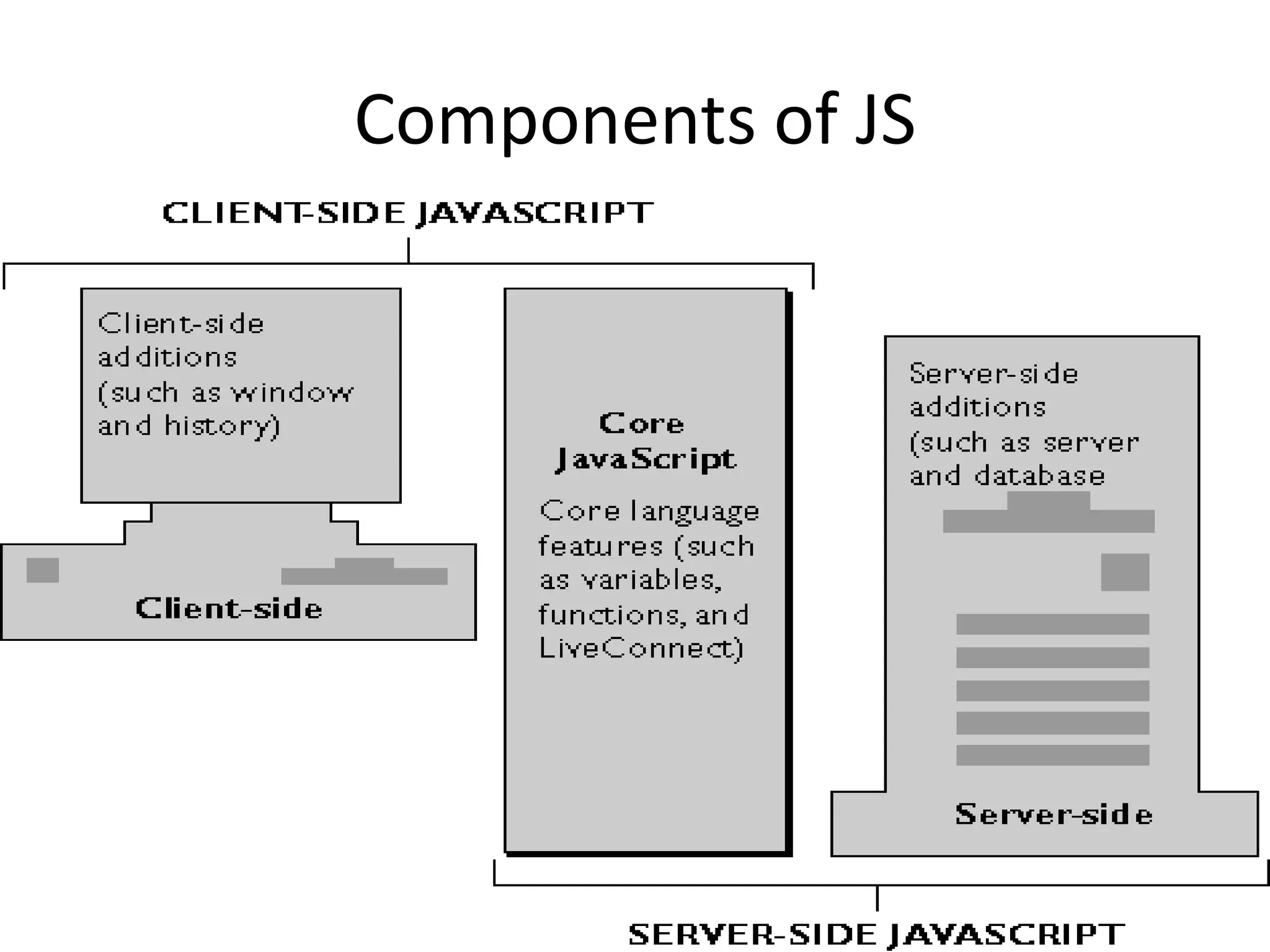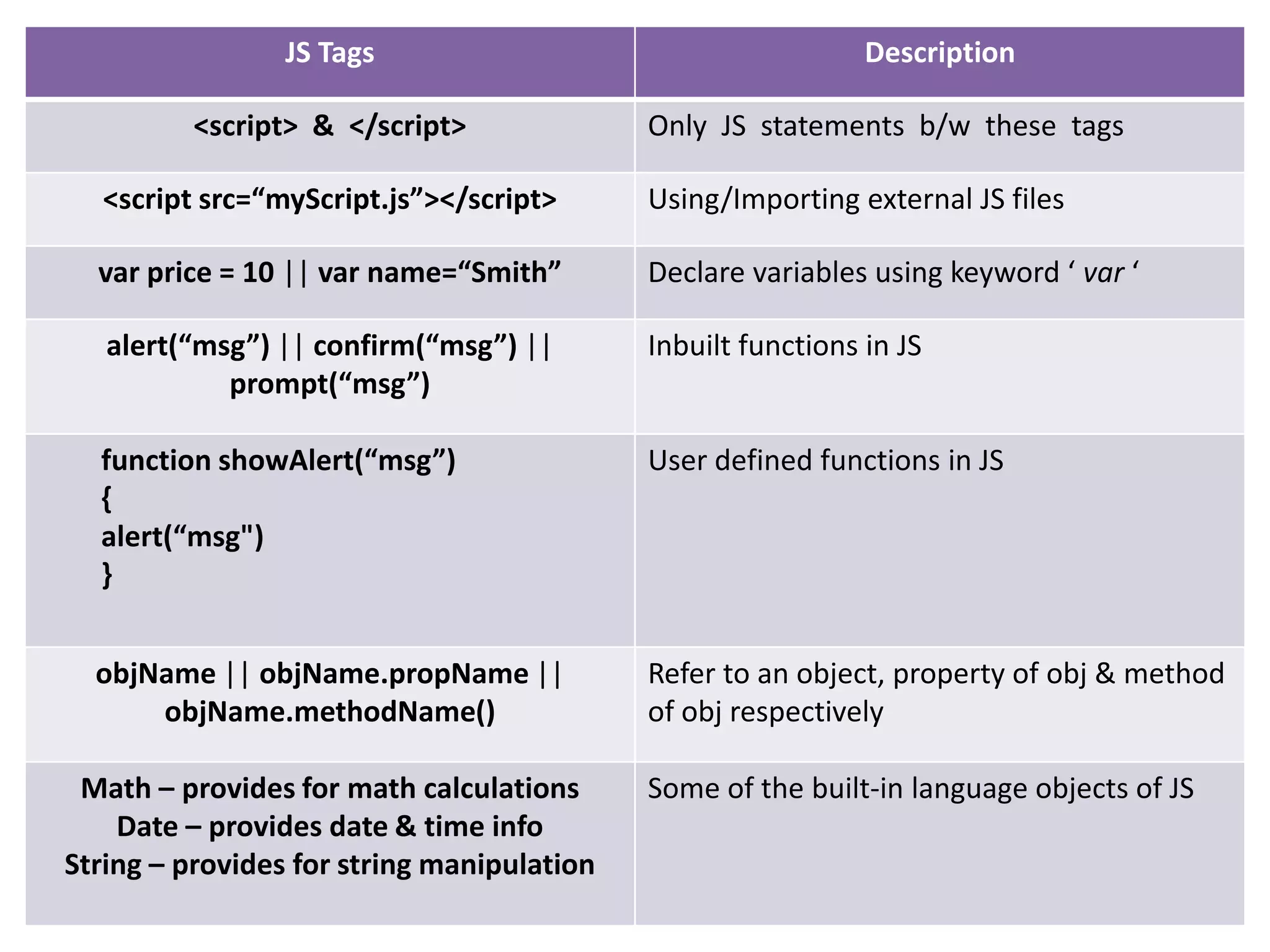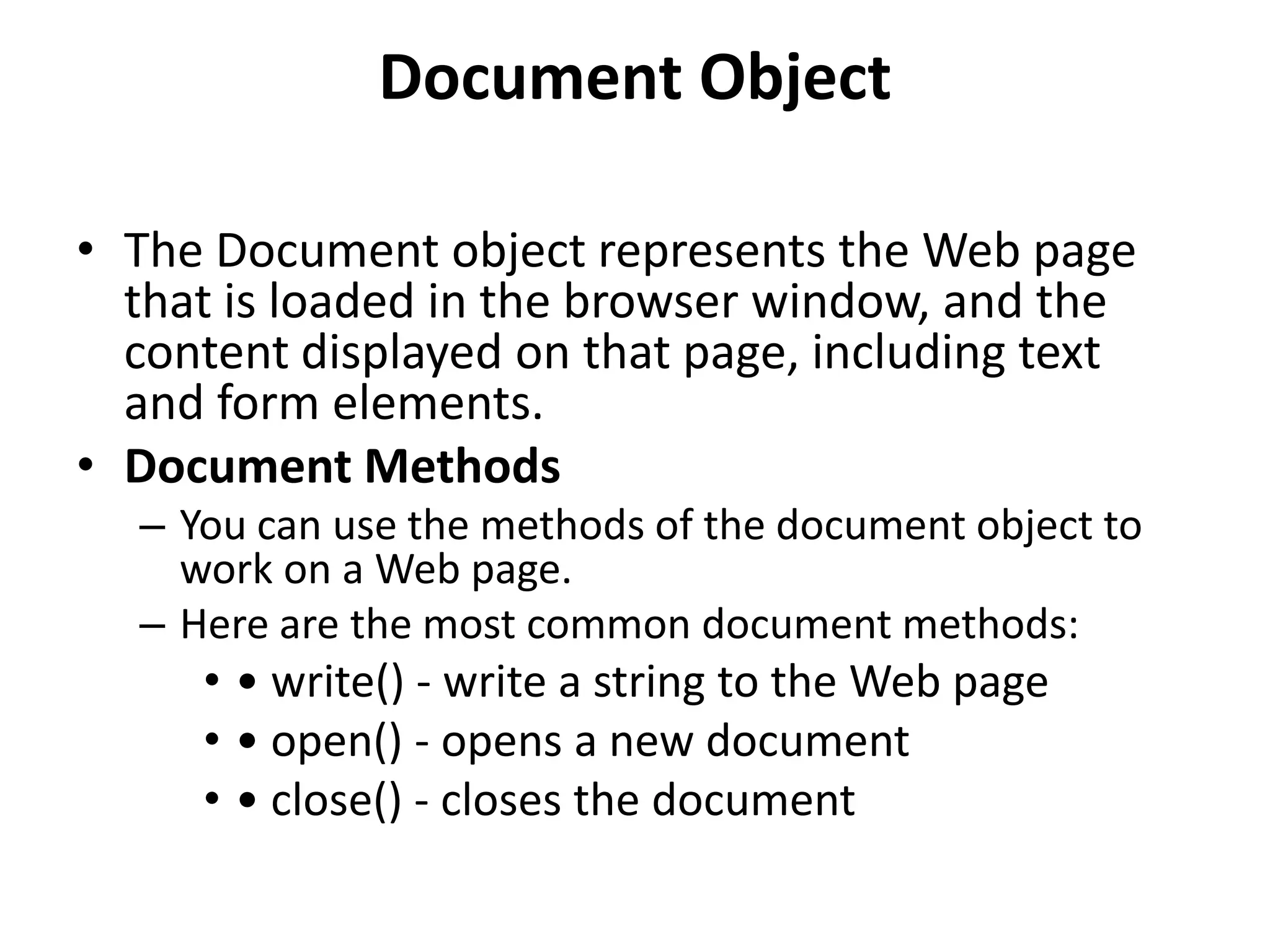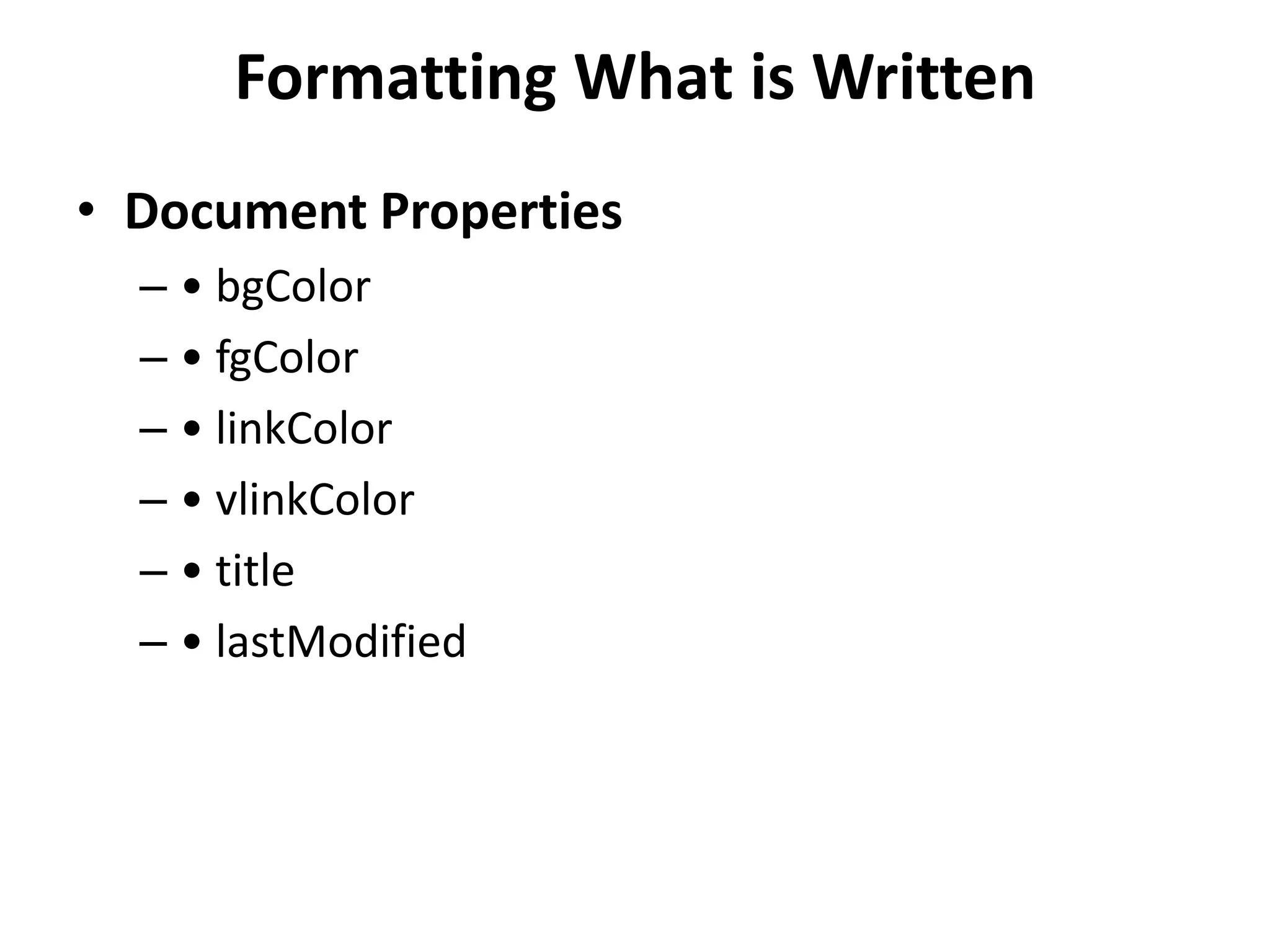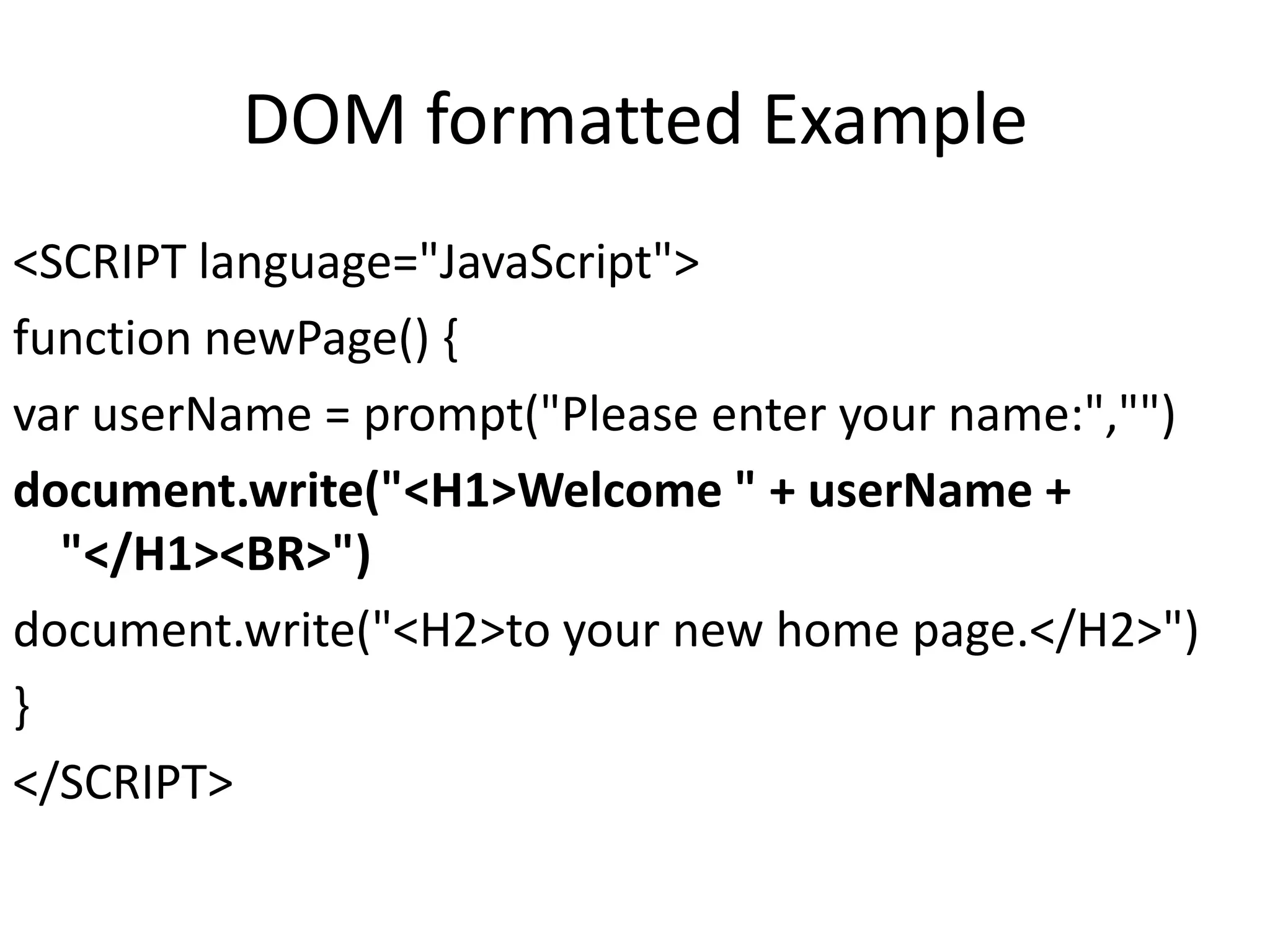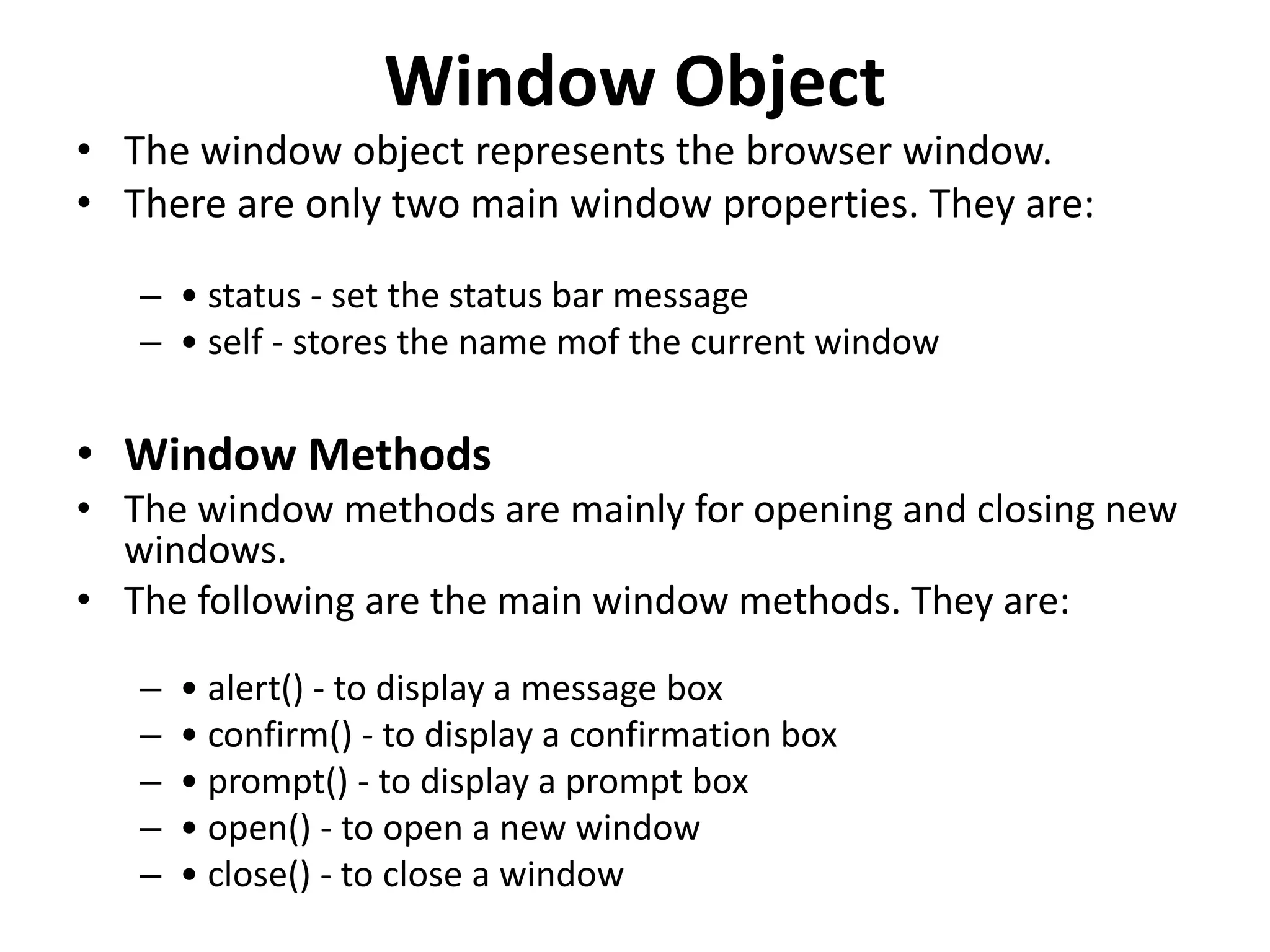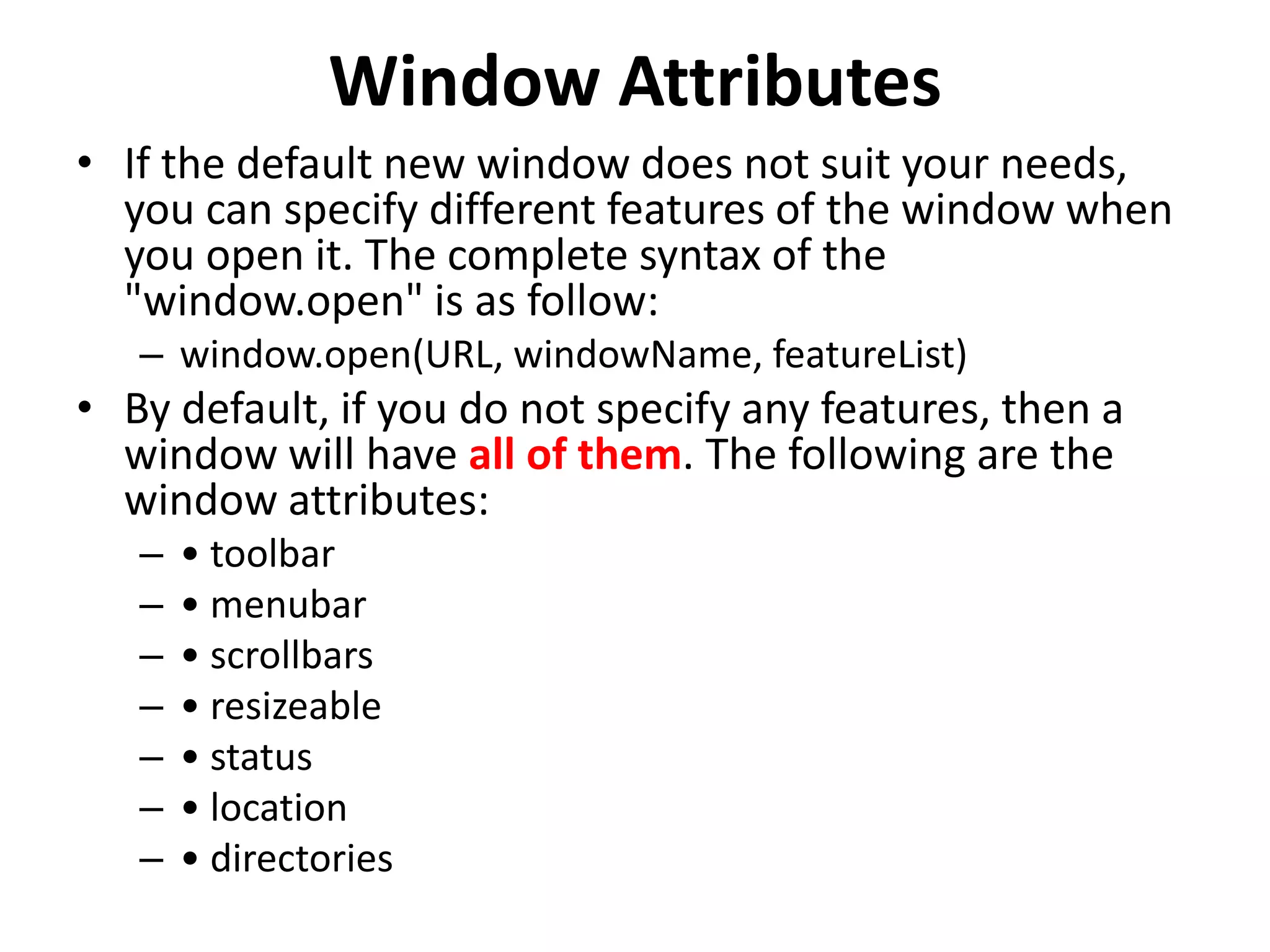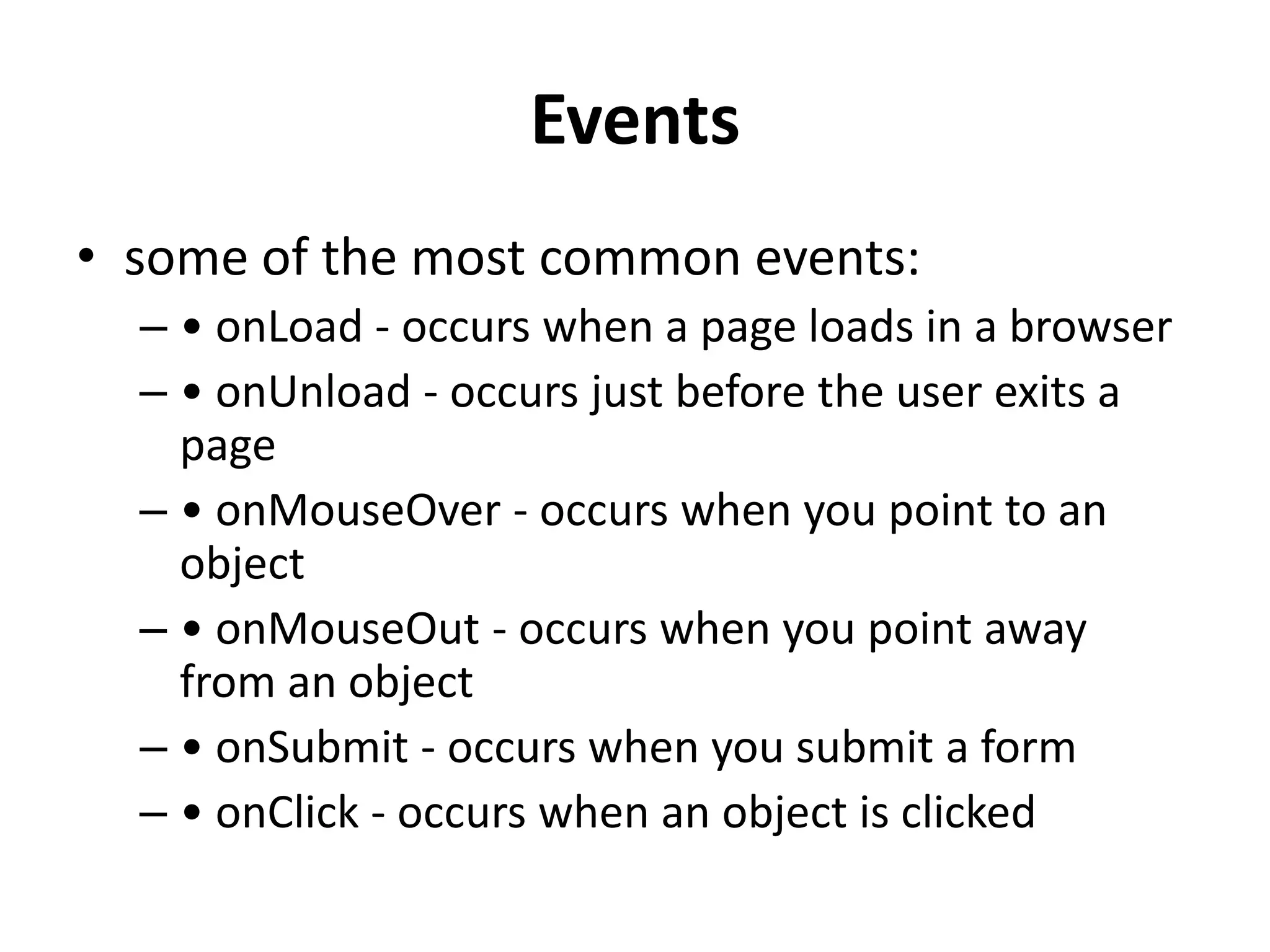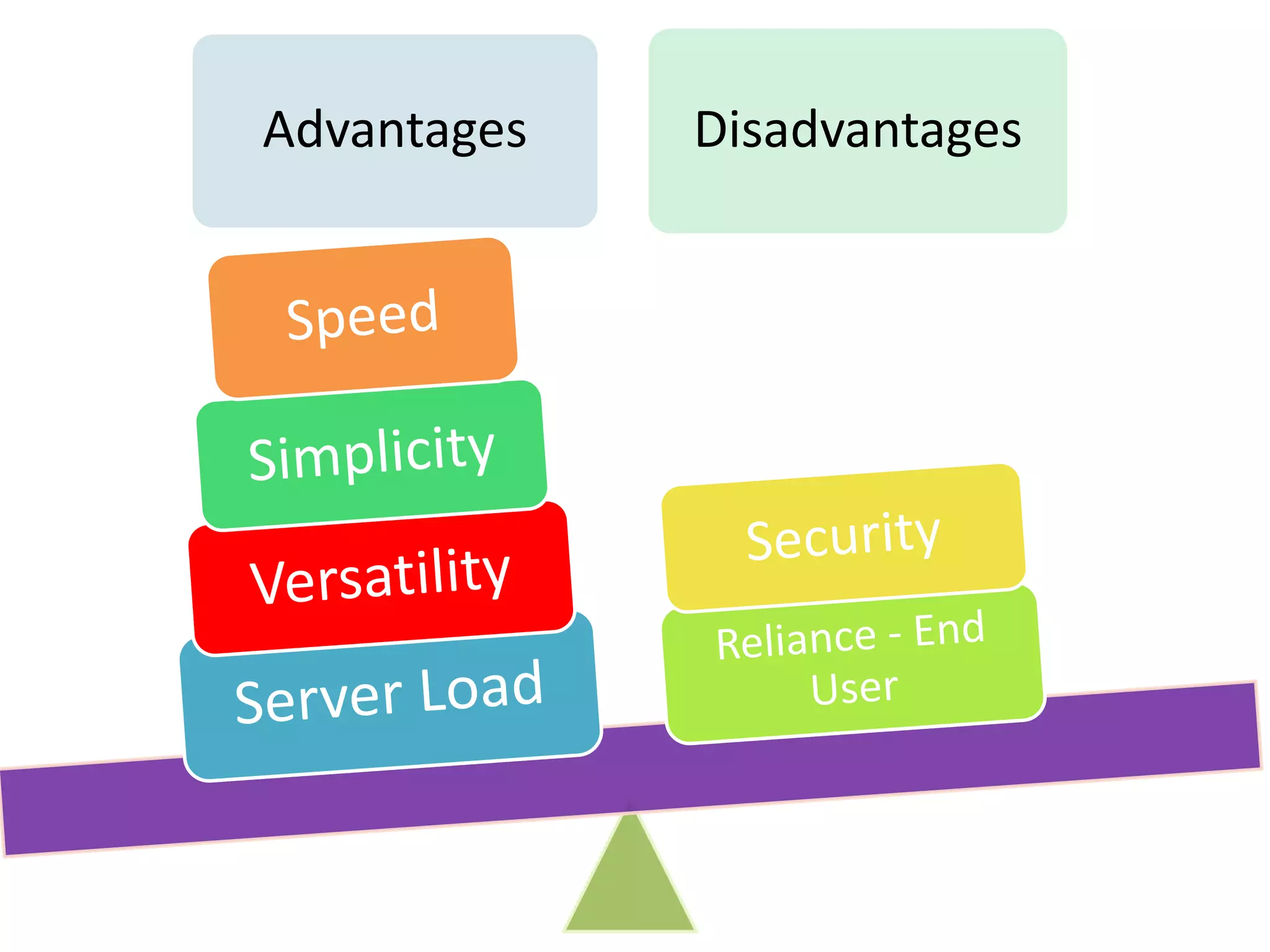This document provides an overview of JavaScript, including what it is, why it's used, who created it, its components and objects. JavaScript is a scripting language used primarily for client-side web page interactions. It allows adding dynamic and interactive elements to web pages. Some key points covered include: - JavaScript is used to specify webpage behavior and enable user interaction/effects. - It was created by Brendan Eich at Mozilla and allows both client-side and server-side scripting. - Common JavaScript objects include Document, Window, Math, Date and String. - Events, functions, variables and tags like <script> are JavaScript components. - The Document and Window
